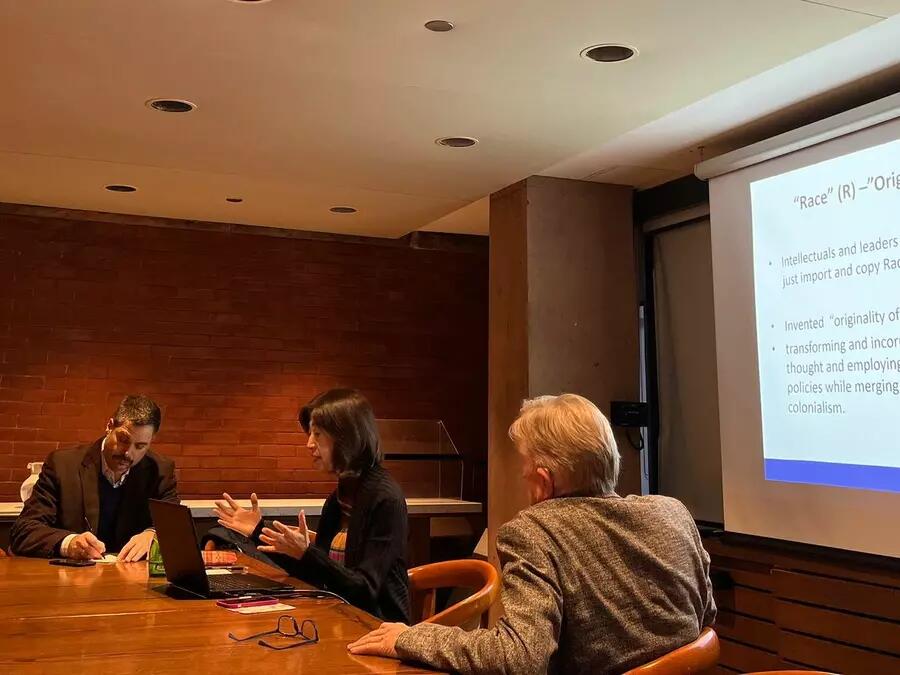
Event Report: Understanding Race Beyond the Transatlantic Paradigm
On November 16th, 2023, Professor Yasuko Takezawa, a professor of anthropology at the Intercultural Research Institute at Kansai Gaidai University, delivered a presentation on understanding race beyond the transatlantic paradigm.
Professor Takezawa began her presentation by introducing misconceptions about the concept of race while emphasizing the distinctions between visual and non-visual representations of race. For instance, visual images of race are commodified by capitalism, and there are marked differences externally, such as skin colour and “hooked noses.” Non-visual representations tend to emphasize differences in factors such as voice and blood.
Professor Takezawa progressed by defining concepts of race through capitalization. She distinguished between “race” in reference to Indigenous racialized groups, and “Race” as a Western notion to categorize people, which led to the rise of resistance against racial domination. However, Professor Takezawa pointed out that those terms were not sufficient to explain concepts of race in a historical context.
Professor Takezawa then focused on the concept of Race and the historical use of science to justify the classification of people. Several books such as John Beddoe’s Race of Britain, and Giuseppe Sergi’s Peoples demonstrate how beliefs about Race were formed through scientific arguments in imperial civilizations. She brought up the historic phenomenon of “Originality of Copy,” which means intellectuals from local societies did not solely copy ideas on Race , instead transforming it to apply to their own social beliefs. For instance, the Burakumin, Okinawans, and Ainu people were minority population groups in Japan that fall into this category.
Finally, Professor Takezawa drew more recent examples to explain “Race as resistance.” The phrase can be widely applied into any social movements against hegemony and social injustice that are defined by race, such as the Black Lives Matter Movement in North America. Lastly, she mentioned “Race as remedy,” which refers to remedial action in historical patterns. She evaluated various countries’ affirmative action attempts, such as Malaysia’s Bumiputera communities and Japan’s “Children with Foreign Roots.”
After the panel discussion, there was a lively question and answer period. The audience was curious about topics such as the Japanese government’s role in constructing racial categories and the connection between racial terminology and gender.
We would like to thank Professor Takezawa for her insights, as well as the audience that was in attendance for an engaged Q&A session. The event was organized jointly between the Harney Program in Ethnic, Immigration, and Pluralism Studies, the Asian Institute, and the Centre for the Study of Global Japan.

